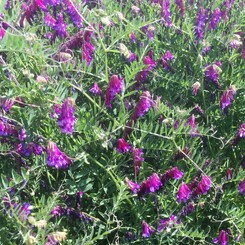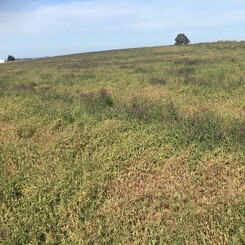Hairy Vetch
Vicia villosa
Hairy vetch can be no-tilled, broadcasted on or drilled into a prepared seedbed.
Hairy vetch is a hardy species tolerating frost, drought and flooding.
The only real significant difference between common vetch and hairy vetch is
Hairy vetch is more winter-hardy than Common vetch.
pros
An annual pasture, forage and grain legume,
Very palatable at all growth stages, from a young plant through to seedpods production in summer
Smothers weeds once establish, have vigorous growth in the spring giving excellent weed control
Can be grown in crop rotations as a pasture or hay crop,
Acts as a disease break between cereals in a rotation.
Highly nutritious dry matter such as hay or silage
The same machinery is used for planting, maintenance and harvesting as used for cereal crops
Soft-seeded species are suitable in all crop rotations without the risk of voluntary plants creating a problem in following crops.
pros
Has the ability to improve soil fertility, soil tilt, structure and organic matter.
Fixes large amounts of atmospheric nitrogen.
Suited to wetter soils and colder winters but grows on a range of soils, preferring loamy and sandy soils.
Moderately sensitive to soil acidity
Protects soil from erosion.
cons
Not well adapted to waterlogging.
Common vetch is less winter-hardy than hairy vetch.


